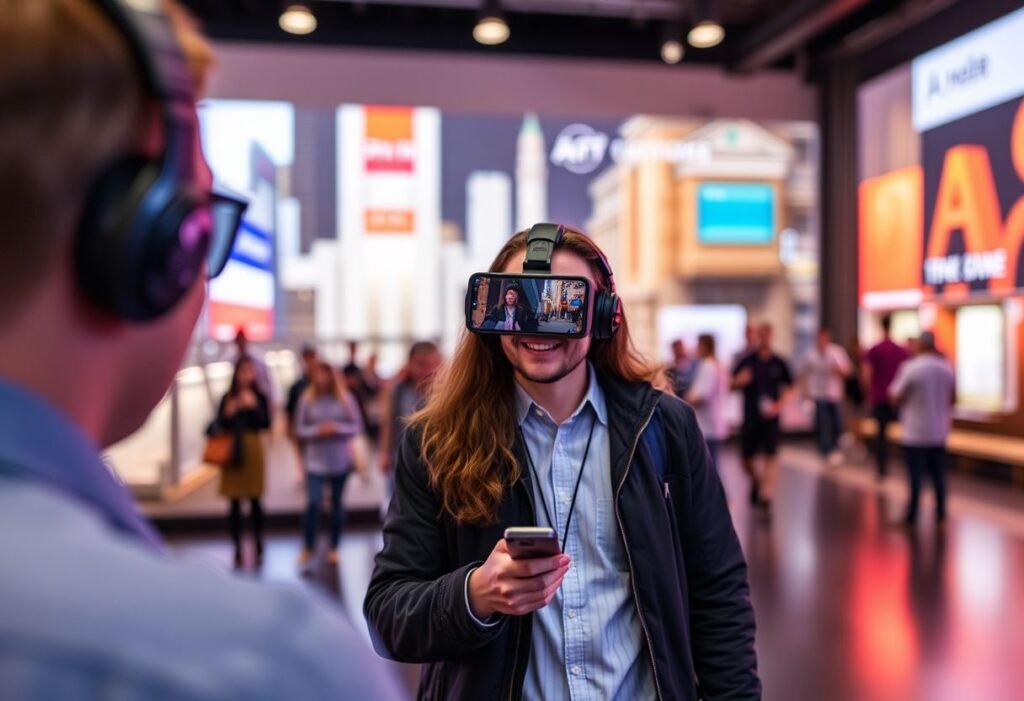Augmented Reality (AR) is revolutionizing how we interact with the world around us, enhancing real-world experiences in unprecedented ways. As industries continue to innovate, integrating AR technology has become essential for creating immersive environments that boost efficiency, engagement, and learning.
The Integration of AR in Everyday Life
Augmented Reality is increasingly prevalent in our everyday lives, from gaming to retail and education. Its ability to overlay digital information onto the physical world allows users to engage more deeply with their surroundings. For example, applications like IKEA Place enable customers to visualize furniture in their own homes before making a purchase, significantly improving the shopping experience. This seamless integration of AR bridges the gap between online and offline engagement, fostering a sense of connection and interaction that was previously unavailable in traditional shopping environments.
Enhancing Education through AR Technologies
The education sector has embraced AR as a transformative tool to enhance learning outcomes. By providing immersive experiences, AR allows students to explore complex concepts in a more tangible way. For instance, anatomy apps use AR to display detailed, 3D visuals of the human body, enabling students to better grasp anatomical structures and their functionalities. This innovative approach not only boosts student engagement but also improves retention rates by making learning both visually stimulating and interactive.
AR in Healthcare: Improving Patient Care
In healthcare, Augmented Reality is paving the way for groundbreaking advancements. Surgeons can utilize AR to visualize patient anatomy in real-time during procedures, improving accuracy and outcomes. Furthermore, AR is being used in medical training, providing aspiring professionals with invaluable hands-on experience through simulated environments. This dynamic approach enhances skill acquisition and confidence, translating into more proficient healthcare providers capable of delivering quality care.
Marketing and Customer Experience Transformation
Marketing has also been transformed by Augmented Reality technologies. Businesses leverage AR to create interactive advertisements that capture consumer attention and drive engagement. For example, cosmetic brands allow users to virtually try on makeup before purchasing, enhancing customer satisfaction and decreasing return rates. This innovative marketing strategy not only increases sales but also improves brand loyalty, as consumers feel more connected to products that they can experience in a personalized way.
AR in Entertainment and Gaming
The entertainment and gaming industries have witnessed some of the most stunning applications of Augmented Reality. Games like Pokémon GO have popularized the idea of blending digital elements with real-world environments, creating a new genre of interactive entertainment. This innovation has not only changed how games are played but has also fostered social interaction among players. As AR technology evolves, it is expected that we will see even more captivating experiences that blend the lines between reality and the digital world.
The Future Directions of AR Technology
As we look to the future, the potential for Augmented Reality technology appears limitless. Innovations in AR software and hardware will lead to even more immersive experiences across various sectors. Companies are focusing on developing AR glasses that are lightweight and user-friendly, making AR even more accessible. Additionally, advances in AI paired with AR can provide personalized content that adapts to user preferences. This future holds the promise of transforming how we perceive and interact with our environment, making AR an integral component of everyday life.
Disclaimer: This article is intended for educational purposes only and should not be considered professional advice.





















